20 February 2023
![]() 8 mins Read
8 mins Read
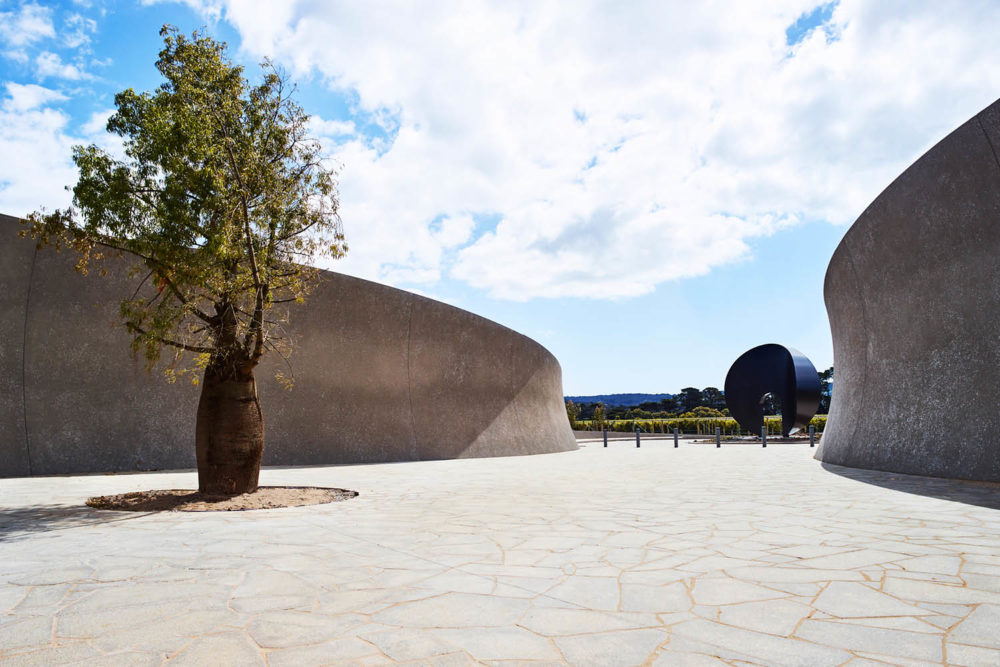
It has become something of an accepted norm that almost everywhere else in the country is relegated to the role of second fiddle when it comes to Victoria. It gets all the best sporting events – the Formula 1 Australian Grand Prix, the Australian Open tennis, the AFL Grand Final – all the headlining art exhibitions; the recent House of Dior: Seventy Years of Haute Couture exhibition at the NGV was a triumph. It has amazing shopping, a vibrant restaurant scene, all those hip graffiti-daubed laneways. And it has the ultimate weekend escape destination: the Mornington Peninsula.
An infuriatingly easy one-hour drive from the centre of Melbourne, the Peninsula is almost pulsating right now with positive energy, as a roster of new openings takes up residence and add cache to its already considerable allure.
While the well-worn track for weary city-dwellers heading out of town for some holiday-home hibernation has long taken in the likes of Mount Martha, Portsea and Sorrento, the newcomers are putting down roots on the ‘other side’ of the Peninsula.
According to Dermot Molloy, my host at the recently minted Pt. Leo Estate, located among the rolling hills and uniform rows of grape vines between the seaside villages of Merricks Beach and Shoreham on the eastern side of the Peninsula, almost 90 per cent of tourism takes place on the west coast, but even a cursory visit would have you believe that the 10 per-centers here on Western Port Bay are definitely onto something special indeed.
The feel here is a lot less ritzy and, dare we say, pretentious than elsewhere on the Peninsula, with the earthy, bucolic surroundings lending the area an unaffected country charm. While the Peninsula as a whole has long-established foodie credentials, with a thriving wine industry and abundant local producers offering up everything from olive oil to cheese to boutique breads, the new arrivals are adding unique offerings to the mix, from accommodation options that would be equally at home in a hip inner-city enclave, to intriguing cultural experiences at the likes of Pt. Leo Estate; and all with great dining thrown in for good measure.
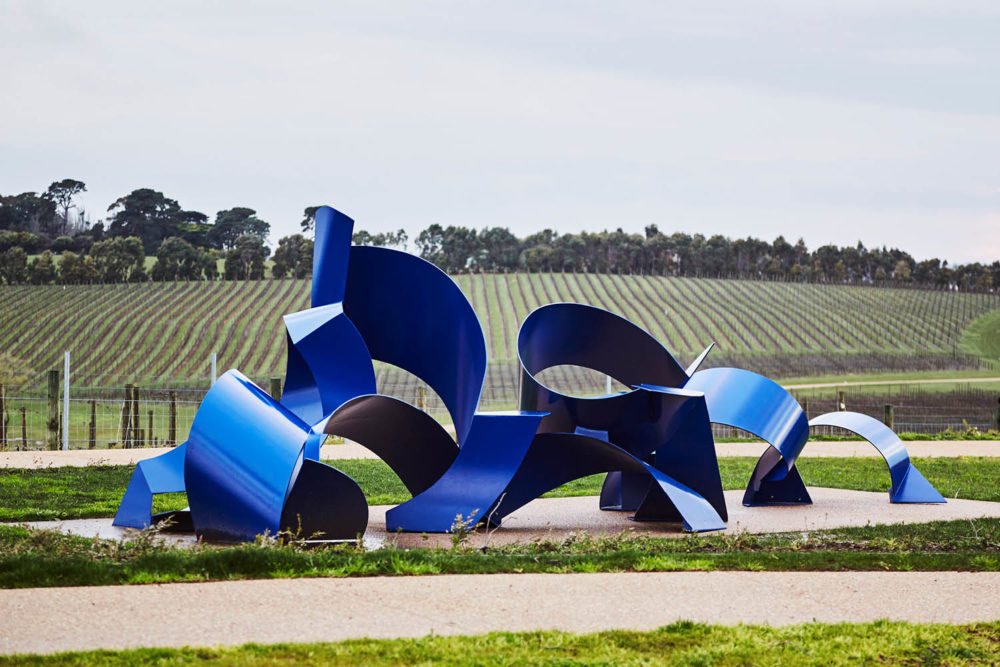
Michael Le Grand’s Tsunami overlooks rows of grape vines at Pt. Leo Estate (photo: Anson Smart).
Dermot Molloy stands behind a long desk just inside the vast curvilinear concrete structure that anchors the multi-faceted Pt. Leo Estate to the surrounding landscape. Owned by the Gandel family, the grounds look out to Phillip Island in the distance and consist of an 20-hectare vineyard, a cellar door, restaurants and, possibly the crowning glory of the whole project, a meandering sculpture garden.
After taking in the interior, where the concrete that dominates the exterior is softened and given a more complementary, organic feel by the inclusion of hand-coloured oak panelling, designed to resemble a wine barrel, we prepare to step outside. Dermot leads the way through a wall of glass that affords views of the grounds and the water in the distance, and onto the snaking path that weaves its way through the Sculpture Park.
With lunch waiting, we opt to take the 30-minute walk; there is a 60-minute option that heads off into the distance towards the adjacent vines. There are currently over 50 large-scale sculptures with plenty of room for more. The collection is made up of pieces by Australian and international artists, all part of the Gandels’ private collection. The Sculpture Park sees all these pieces finally brought together in one place for the first time, having in the past been stored or loaned out. One work was relocated from a paddock where some of the property’s 100 or so head of Angus cattle used it as a scratching post.
Similar in execution to Sculpture by the Sea, except that it’s by a bay, the collection allows those viewing it to explore the works from every angle as they walk this way and that. Pieces are rendered in various mediums, from slate to wood to metal. Off to the side a quaint little house stands in resolute defiance of the surrounding modernity. Dermot tells me that this is the original homestead which was carefully picked up and moved to make way for the new building.

Ma’aseyahu by Boaz Vaadia, Pt. Leo Estate (photo: Anson Smart).
We pass artist Deborah Halpern’s Portal to another time and place, 2005, as we head back into the main building, a giant arch with a Picasso-like jumble of features created in colourful ceramic tiles. Small children delight in passing through it, feeling its smooth surface and hiding from siblings behind its dwarfing girth.
The restaurant is quickly filling up for lunch, a ringing endorsement considering it’s a Monday. The diners present as a mix of out-of-towners from Melbourne and beyond, and locals gathering with friends for a catch up. The light-drenched space is meticulously designed, with bleached wood tables and chairs (every one done by hand Dermot tells me), soaring ceilings and a buzzing open kitchen presided over by Phil Wood (formerly of Sydney’s Eleven Bridge), who is living the sea-and-tree change dream.
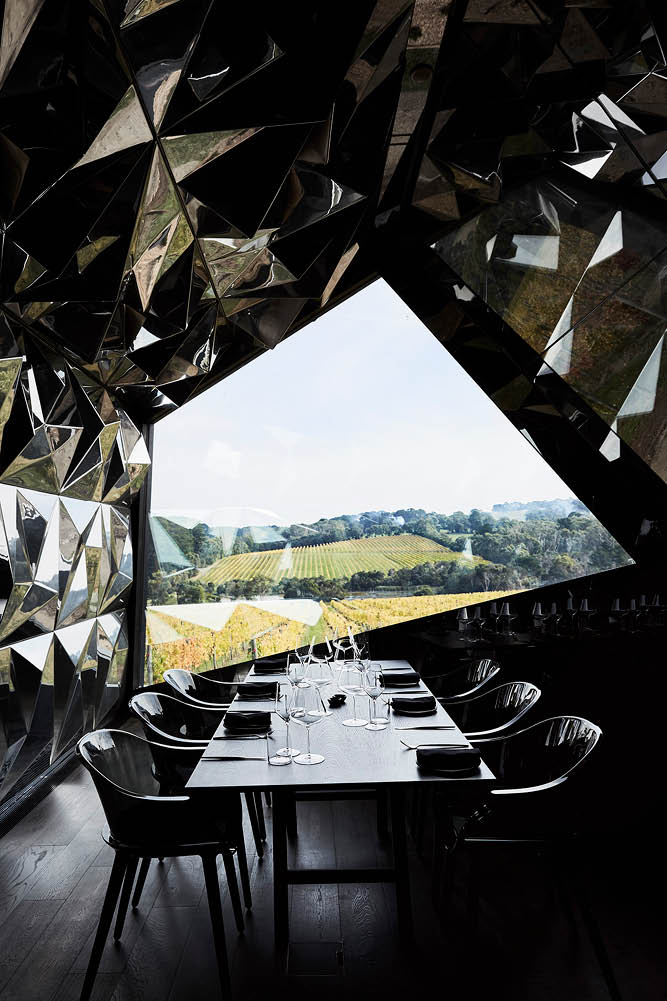
Private dining with a view at Jackalope.
The menu utilises the best local produce and has been designed to provide lots of opportunity for sharing. The custom-built kitchen has its own wood-fired oven, all the better for making the instantly addictive apple bread that arrives at the table first; local apples are roasted before being added to the dough, and cooked to gum-punishing crunchy perfection.
A collection of dishes lands on our table, each meticulously constructed. “Is that the beetroot pancake?” a woman at the next table asks as she looks longingly at the plump pink cloud of perfectly cooked batter that sits in front of me. “We ordered that too,” she says. “Everything just looks so delicious.”
Indeed the pancake, served with lemon curd and Yarra Valley trout roe (the fish are ‘milked’ not killed for the roe) is as delicious as it looks. Wood was inspired to create the dish by a 100-year-old recipe from Tasmania.
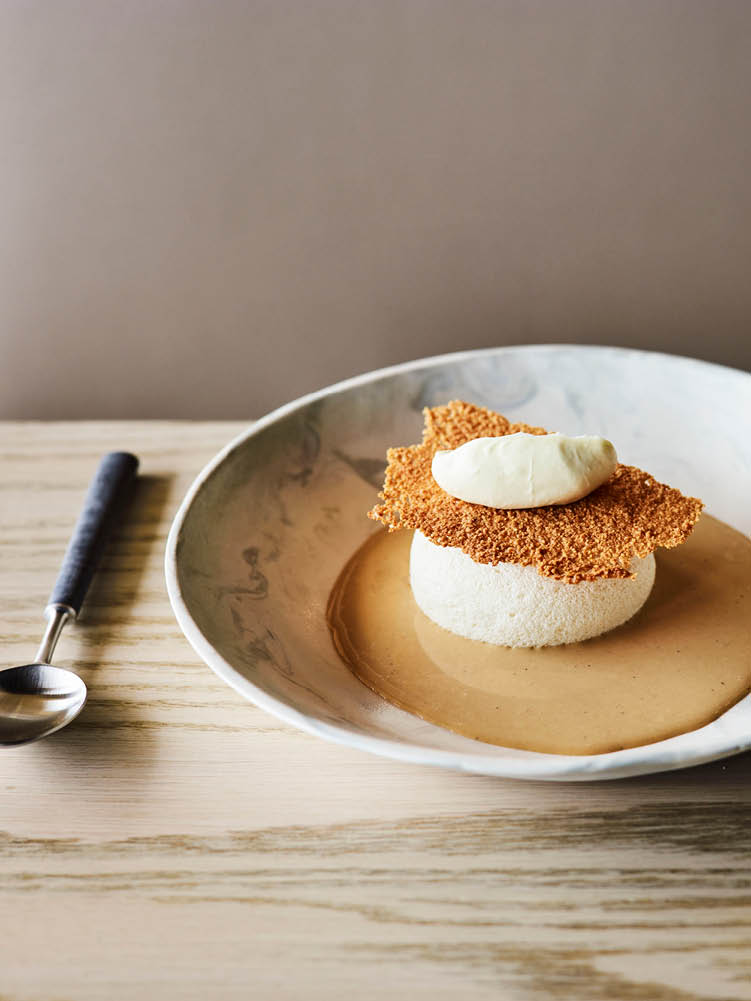
Saving room for dessert at Pt. Leo Estate is an absolute must (photo: Anson Smart).
By the time we have finished off a dessert of local cherry flan with chardonnay ice-cream made from Pt. Leo Estate’s own chardonnay (the award-winning wines are only available from the cellar door or online) I am ready for a lie down. The perfect option for this is just a short drive down the road.
Having caused quite a stir when it opened last year, Jackalope is a haven of hip amidst a dreamy landscape of grape vine and picture-perfect countryside. A mammoth jackalope sculpture by artist Emily Floyd dominates the foreground, overlooking the startlingly modern construction of the hotel, also rendered in large swathes of black, which clings to an original homestead building.
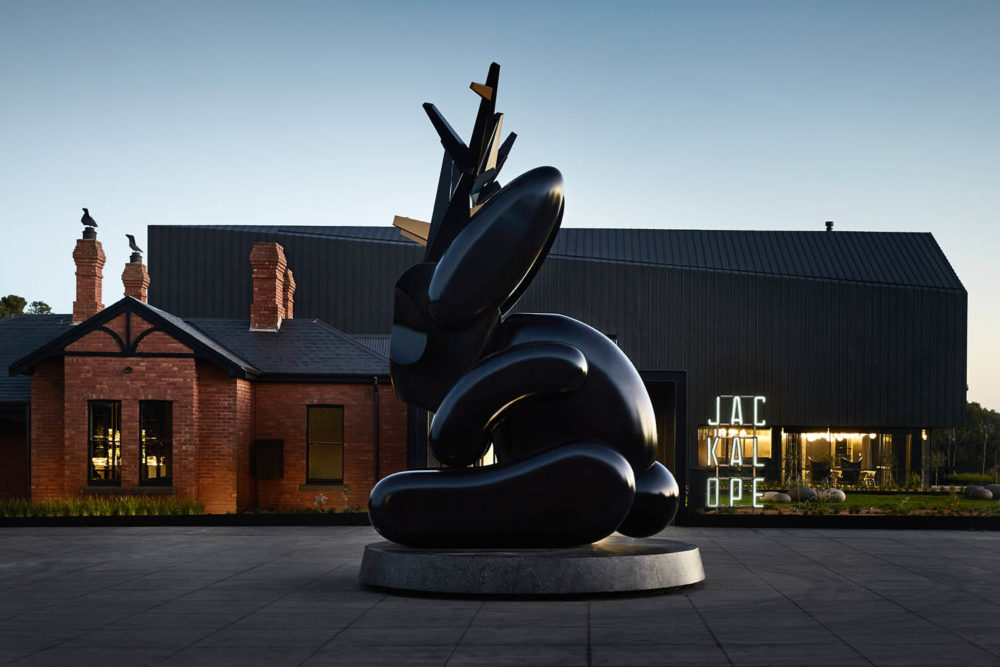
Emily Floyd’s seven-metre-tall Jackalope dominates the hotel’s entrance.
Breezing past a barely-there reception desk, and along a huge glass rectangle wine cellar that speaks of its setting, the 45 rooms are sleek, minimalist affairs, rendered in dark wood. Given its location, food is a focus here as well, with a kitchen garden the size of two tennis courts contributing to seasonal menus in the signature restaurant Doot Doot Doot, and the more casual Rare Hare, located in the original, and still functioning, winery buildings.
While the assault of the new at both Pt. Leo Estate and Jackalope might seem jarring, both establishments are contributing to the possibility that ‘over there’ might eventually play second fiddle to the ‘other side’ of the Mornington Peninsula.
Getting there: The Mornington Peninsula is just over an hour’s drive from Melbourne. There is also a ferry service operating from Queenscliff to Sorrento.
Staying there: Rooms at Jackalope start from $650 per night.
Playing there:The Sculpture Park at Pt. Leo Estate is open daily from 11am–6pm. Entry fees apply.
Eating there:
– Pt. Leo Estate is open for lunch seven days, and dinner five nights a week.
– Doot Doot Doot is open for dinner seven days, and lunch on weekends. Rare Hare is open for lunch seven days, and dinner on Friday, Saturday and Sunday.
LEAVE YOUR COMMENT